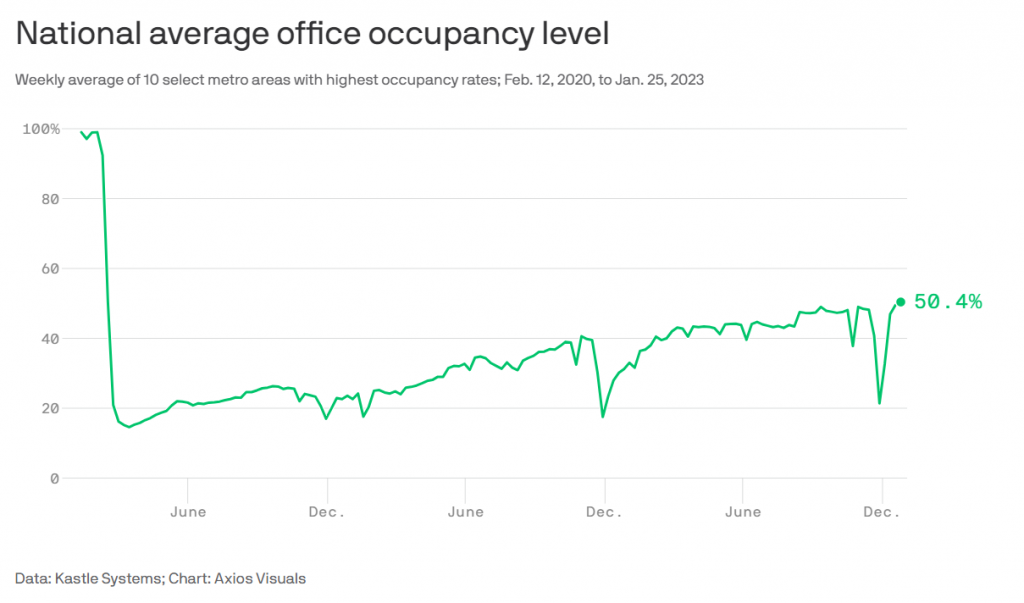Organizations are intensifying their return-to-office (RTO) plans, with leaders like IBM leading the charge with a three-day in-office requirement. This emphasizes corporate America’s renewed focus on structured in-office presence for increased productivity and collaboration.
Pressed for time? Here’s a quick summary…
- IBM’s new policy: In January 2024, IBM introduced a mandate that requires all US managers to work in-office three days a week, affecting previously remote employees.
- Five-day club: Companies like UPS, JPMorgan Chase, and Boeing are pushing for a full five-day in-office week, aiming to restore pre-pandemic operations.
- Hybrid work remains: The hybrid model has stabilized in adoption, combining both remote and in-office work.
- Well-being considerations: RTO mandates challenge work-life balance, flexibility, and autonomy.
- Effective RTO strategies: Offering flexible scheduling, implementing a freeform hybrid model, and maintaining open communication safeguard employee well-being and trust.
IBM’s Office Mandate
In January 2024, IBM introduced a mandate requiring all US managers to work in-office at least three days a week. This policy immediately affects remote workers (except those with military or medical exceptions), who must relocate within commuting distance of an office by August 2024.
“IBM is focused on providing a work environment that balances flexibility with the face-to-face interactions that make us more productive, innovative and better able to serve our clients. Consistent with that approach, we’re requiring executives and people managers in the United States to be in the office at least three days per week.”
IBM spokesperson
Non-compliant managers face an ultimatum: relocate or resign.
Five-Day Club & Record-High Occupancy Rate
IBM’s policy reflects a broader movement toward traditional work arrangements, with companies like UPS, JPMorgan Chase, and Boeing advocating for a full five-day in-office week. This push reflects a widespread desire to restore pre-pandemic operations.

However, full-time in-office work remains uncommon among large firms, with 82% of Fortune 500 companies still offering remote work options. Additionally, while office occupancy rates have reached a post-pandemic peak of 50.5%, the plateauing trend since September suggests a stabilization of the hybrid work model.

This indicates a continued effort to balance the benefits of remote and in-office work for optimal employee productivity, well-being, and satisfaction.
Navigating Employee Well-Being In The RTO Era
RTO mandates raise concerns about employee well-being, notably impacting work-life balance, flexibility, and autonomy. Remote employees may face challenges during the transition, such as longer commutes and less personal time, impacting workplace morale and satisfaction. Moreover, privacy concerns arise as some companies monitor attendance, potentially straining trust between employers and their staff.

To mitigate these effects, employers can adopt RTO strategies like offering flexible scheduling, implementing a freeform hybrid model (allowing employees to choose their in-office days), and maintaining transparent communication about attendance tracking. Encouraging a culture that values results over hours spent at a desk can help preserve autonomy and well-being, fostering a positive and productive work environment.












